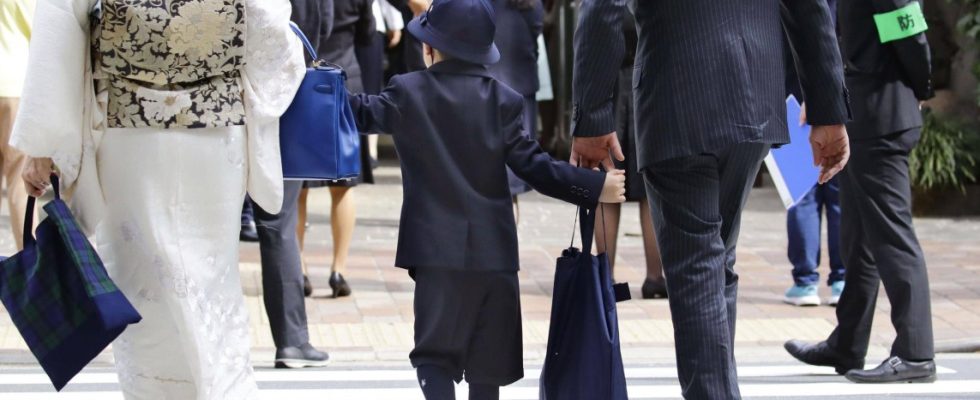Among Tokyo’s skyscrapers, the Taimei State Elementary School building looks quite small. Nevertheless, it attracts attention with its columns and ivy-covered facades. The timeless elegance matches the tenacity with which the school has persevered since it was founded in 1878. After the Great Kanto earthquake in 1923 and the wartime bombardment in 1945, it was rebuilt. And she also survived the spectacular dispute over the Armani uniforms of 2018. Parents were outraged when the school management introduced voluntary uniforms from the Italian luxury brand for their six to twelve-year-old children. Today, the fine fashion for teaching is established, like the Chuo District Education Bureau in the newspaper Asahi confirmed.
School uniforms are a recurring theme in Japan. They are questioned, defended – and more and more adapted to a more liberal zeitgeist. The debate about the Armani uniforms of the Taimei elementary school was a small, weird highlight. It suited the location, as the school is in the Ginza district, which is known for its chic shopping streets. But the price of 80,000 yen for a winter and summer outfit in navy blue was twice as high as usual.
One advantage of the uniform: You don’t have to think about what to wear
The uniform look came to Japan’s schools at the beginning of the Meiji period (1868 to 1912). The island state then woke up as an industrial nation. The Western-style uniforms were intended to promote discipline and a sense of community. To this day, the majority in the island state is in favor of young people attending middle and high schools wearing the same clothes. A survey conducted by the school uniform manufacturer Kanko among 3,600 mothers and fathers in 2022 showed an approval rate of 87.2 percent. The most common advantage mentioned was that young people “do not have to think about what to wear every day”.
Every school has its own uniform rules, some of which are very strict, such as regulations on the color of underwear. The criticism of such extremes is now loud. And more and more schools allow the free choice of clothes. During the pandemic, some authorities simply found schoolchildren in their private clothes more hygienic because school suits go into the washing machine less often. Arguably the biggest issue in school dress codes in Japan is the shift to gender-neutral uniforms. The skirt requirement for girls shakes. A newspaper poll Mainnichi among school boards confirmed the trend. The newspaper reported on an example: In April, Gyoda Middle School in Funabashi introduced a new uniform freedom: the youngsters there can now mix and match blazers, skirts, ties and bow ties as they wish.
The Armani policy in Taimei Elementary School draws attention to another issue. Can luxury be socially acceptable? In any case, the school is so popular that admission is often decided by drawing lots. The cost of clothes? Reduce parents by having their children adopt uniforms from elders. In addition, there is also a price to clothe a child privately, says an anonymous person from the parent circles of the newspaper Asahi: Armani for 80,000 yen every day for six years is ultimately cheaper.

